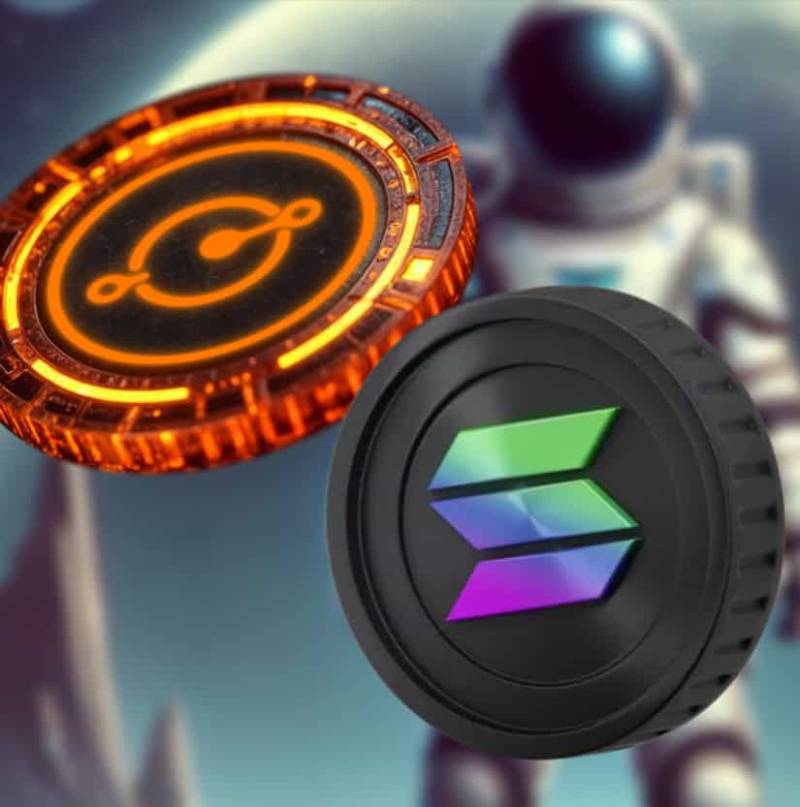 |
|
 |
|
 |
|
 |
|
 |
|
 |
|
 |
|
 |
|
 |
|
 |
|
 |
|
 |
|
 |
|
 |
|
 |
|
Cryptocurrency News Articles
Sui vs Aptos: Which Will Dominate the Next-Gen Blockchain Era?
Jan 30, 2025 at 05:04 pm
We compared Sui and Aptos in terms of blockchain performance, scalability, ecosystem, and transaction advantages, and predicted that by the end of 2025, the price of SUI will reach $16, and APT will reach $22.

Author: Patrick Bush, VanEck
Compiled by: Alex Liu, Foresight News
We compared Sui and Aptos in terms of blockchain performance, scalability, ecosystem, and transaction advantages, and predicted that by the end of 2025, the price of SUI will reach $16, and APT will reach $22.
Please note that VanEck holds Sui (SUI) and Aptos (APT).
Sui vs. Aptos: Origins and Overview
Previously, we discussed the potential of Ethereum and Solana to attract billions of users into the crypto space. While both ecosystems are highly attractive, they represent early blockchain technology. Since their inception, a new generation of blockchains has emerged to break through the limitations of these systems, including Aptos and Sui, founded by former members of Facebook's blockchain project Diem.
Diem attempted to create a stablecoin payment system for Facebook's social media platform but was shelved due to regulatory pressure. However, its technological experiments led to significant breakthroughs in the blockchain field. The most important legacy of Diem is the Move smart contract programming language—developed based on Rust, which is used by 4.3 million developers globally and is the third fastest-growing language, optimized to address the shortcomings of early smart contract languages like Ethereum's Solidity and Cardano's Haskell. Both Aptos and Sui leverage Move to build a faster, safer, and more intuitive development environment for developers. Move also enables both virtual machines (VMs) to achieve faster transaction confirmation speeds (the time users receive confirmation) and higher throughput (the volume of transactions processed by the system in a given time). The potential of Move is so great that the total market capitalization of Move-based blockchains skyrocketed from about $5 billion to $22 billion within a year.
Core Comparison Dimensions
The size of the crypto developer community is only 1/1000 of JavaScript
Data source: Electric Capital, Slash Data (as of 2024/12/19)
The significance of the Move language lies in providing a more developer-friendly entry point. The crypto developer community is extremely small—Meta (Facebook) has more full-time developers than the entire crypto industry. By offering a more user-friendly and efficient language, Move is expected to attract a broader developer community, fostering experimentation and innovation. This innovation is crucial for uncovering "killer applications" that drive mass adoption. We view blockchain as an innovation experimentation platform, with its high valuation stemming from its ability to nurture applications for hundreds of millions of users. Since no one can predict how the next breakthrough application will emerge, attracting as many developers as possible to experiment is particularly critical.
Both Aptos and Sui combine the Move virtual machine with advanced consensus mechanisms to ensure efficient transaction validation on the network. This cutting-edge combination of virtual machines and consensus protocols forms the technical foundation that provides performance beyond previous blockchain systems. Before innovations like Solana's Firedancer prove their limitations, Sui and Aptos represent the pinnacle of blockchain technology.
Aptos set a record of 326 million transactions in a single day on 2024/10/18 (13,300 TPS)
Daily transaction peaks of various blockchains Data source: Artemis XYZ (as of 2024/12/19)
Sui and Aptos provide key blockchain technologies capable of serving hundreds of millions of users. Both outperform Solana (which sacrifices complexity for scalability) and Ethereum (which sacrifices flexibility for a rich ecosystem) in simplifying development processes and ensuring security. Tactically, Sui and Aptos offer a better experience for current core crypto use cases (speculation and value transfer); strategically, they lay the foundation for non-speculative applications such as AI agents, social media, and cloud services. While the forms of future phenomenal applications remain unknown, Sui and Aptos have already demonstrated strong potential to attract the next generation of blockchain users.
But what exactly makes these systems so exceptional? Which one is superior?
Sui vs. Aptos: Blockchain Performance and Scalability
Despite sharing the Move language gene, the blockchain architectures of the two reflect different design philosophies. Each network employs a customized version of the Move language, uniquely optimized for transaction processing.
When a transaction is sent to the blockchain, it carries information about the database (i.e., "state") that needs to be modified. Blockchain engineers refer to these database updates as "state changes." Most blockchains use a hierarchical validation mechanism: a single validator acts as a temporary "leader," responsible for receiving transactions, validating their validity (checking signatures, preventing double spending), ordering execution, and updating the state, with the generated transaction block broadcasted to other validating nodes. When more than two-thirds (66%) of validators reach consensus, the blockchain proceeds to process the next block.
Blockchain architecture can be divided into two core components:
To enhance throughput, either block size must be increased or data processing efficiency must be optimized. Sui
Disclaimer:info@kdj.com
The information provided is not trading advice. kdj.com does not assume any responsibility for any investments made based on the information provided in this article. Cryptocurrencies are highly volatile and it is highly recommended that you invest with caution after thorough research!
If you believe that the content used on this website infringes your copyright, please contact us immediately (info@kdj.com) and we will delete it promptly.





























































